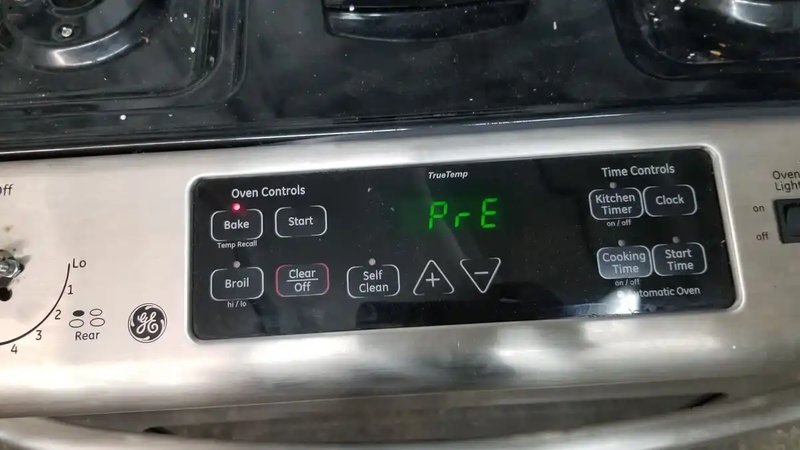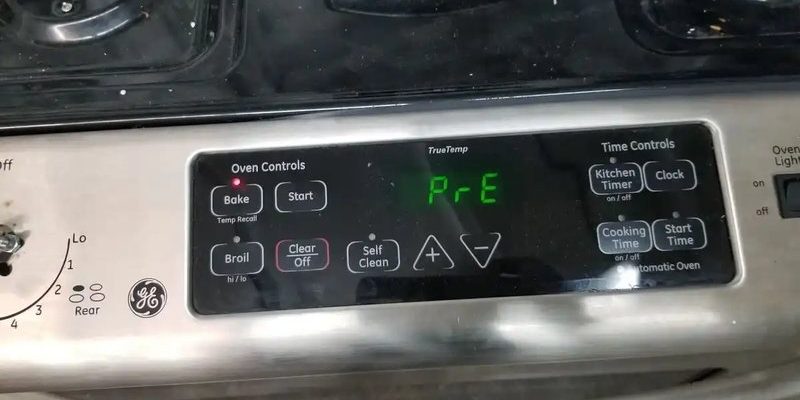
Error codes, in general, are like the little smoke signals your appliances send when they’re having an issue. And just like how you wouldn’t ignore a smoke alarm, it’s wise not to disregard these codes. The F2 code typically means that the oven’s temperature sensor, also known as the oven sensor probe, might be malfunctioning. This sensor’s job is to keep track of the oven’s temperature, ensuring it doesn’t get too hot or too cold. If it’s malfunctioning, it can cause the oven to overheat, which isn’t safe for you or your delicious culinary creations.
Understanding the GE Oven Error Code F2
So, what exactly does this F2 code tell us? In simpler terms, the F2 error code is like a friend saying, “Hey, I’m too hot over here!” When your GE oven displays this code, it means the oven’s internal temperature has exceeded safe limits. This could be due to a variety of reasons, such as an issue with the oven’s temperature sensor or issues with the control board that manages the heat levels. If the oven’s temperature is not correctly regulated, it can lead to uneven baking results or potentially, damage your oven.
Now, why does this happen? Imagine if your home’s thermostat was stuck at the highest setting—it would get uncomfortably warm. Similarly, an error in the oven’s sensor or control board could cause it to think it needs more heat than necessary. This error could also be a symptom of a defective sensor or a short in the sensor’s wiring. The oven, sensing something’s amiss, will display the F2 code and may even stop functioning to prevent further damage or risk.
Given its significance, the F2 error shouldn’t be ignored. You wouldn’t ignore a car’s overheating signal, right? Continuous use without addressing the cause can lead to permanent damage to your appliance or even pose a safety risk. Understanding the meaning behind this error code is the first step towards resolving the issue and ensuring your oven returns to safe and optimal functioning.
Steps to Fixing the F2 Error Code
Fixing the F2 error code isn’t as daunting as it might seem. First, let’s address the immediate concern: safety. Whenever you’re tackling appliance issues, always ensure the power is off—unplug the unit or turn off the circuit breaker that powers the appliance. Safety first, right? With the power off, you can inspect the oven’s temperature sensor. It’s usually located at the back wall of the oven interior, resembling a thin rod or probe.
Check to see if the sensor is loose or disconnected. If it appears damaged, it might need replacing. Think of it like replacing a faulty battery in a remote control—it’s a small component, but it can stop the whole system. You can typically find replacement sensors online or through local appliance parts stores. Also, ensure there’s no damage or corrosion on the sensor’s wiring, as this can disrupt its functionality.
Once you’ve checked or replaced the sensor, reconnect the power and test the oven. If the error persists, the issue might lie within the oven’s electronic control board. This board is like the oven’s brain, managing all its functions. If it malfunctions, it could send incorrect signals to the sensor. At this stage, consulting a professional might be your best bet, as dealing with electronic components can get tricky.
Preventing Future F2 Errors
Wouldn’t it be great if we could avoid problems before they occur? Fortunately, there are ways to minimize the recurrence of the F2 error. Regular maintenance is key. Just like you’d routinely check your car’s oil or tire pressure, taking time to inspect your oven can save you from unexpected headaches. Occasionally clean the oven and its components, look for signs of wear, and ensure everything is in place.
Another tip is to use your oven as intended. Overloading it or using inappropriate cookware can cause undue strain on its components, leading to errors like the F2. Think of it like wearing a pair of shoes two sizes too small—they’ll end up damaged. Additionally, ensure your kitchen is well-ventilated when using the oven to avoid overheating.
Finally, staying informed can help you quickly address and resolve any issues that arise. Keeping the oven’s manual handy, familiarizing yourself with common error codes, and knowing when to call in a professional can go a long way in maintaining your appliance in top shape. By staying proactive, you’ll not only extend the lifespan of your oven but also ensure it operates safely and efficiently.
In conclusion, while the F2 error code can seem alarming, understanding its implications and addressing its causes can mitigate risks and keep your GE oven in top working order. So next time you see that code flash, you’ll know exactly what to do!
